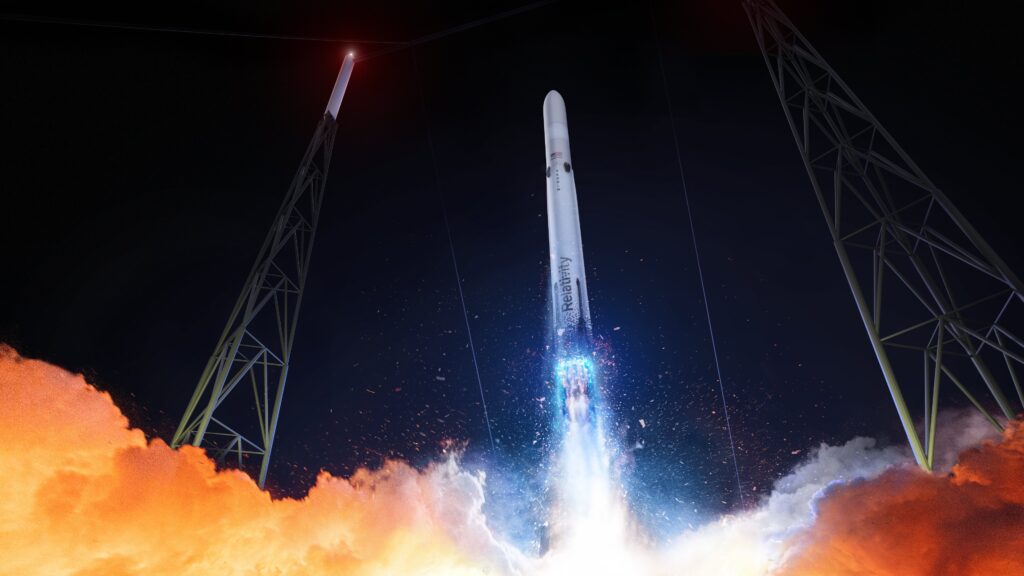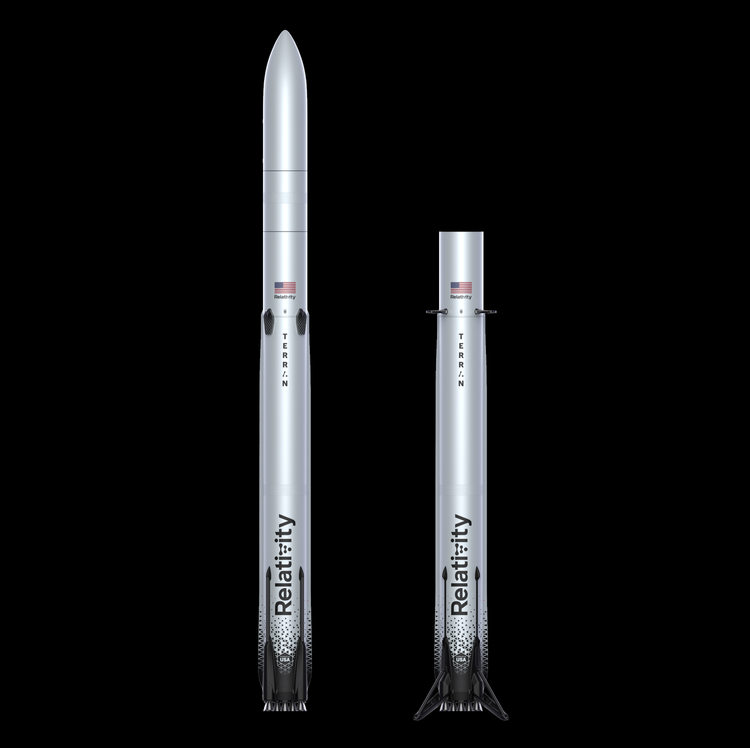Relativity Space has decided to abandon further attempts to launch the Terran 1 rocket. Instead, the company will focus all its efforts on the more powerful Terran R carrier, which has been significantly redesigned.
First 3D-printed rocket
Relativity Space was founded in 2015 with the aim of creating rockets that would be completely printed on 3D printers. According to the designers’ idea, such an innovation will radically speed up the process of building carriers and reduce their cost.

The first Relativity Space orbital rocket was the Terran 1. It had a two-stage design and could put up to 1250 kg of cargo into low Earth orbit (LEO). About 85% of the carrier components were printed on a 3D printer.
The first (and only) launch of Terran 1 took place on March 22. The rocket successfully worked out the first stage work area, the second stage failed it. Due to a malfunction of the engine, Terran 1 failed to develop the first space speed and fell into the Atlantic Ocean. The rocket did not carry any satellites — the only cargo on board was a 3D-printed part.
Update of the Terran R rocket
Even before the launch, Relativity Space management stated that it was exploring the possibility of stopping further work on Terran 1 and focusing all efforts on developing a much more powerful Terran R rocket. In a series of recent tweets, the company confirmed that it had indeed made such a decision. According to its management, the segment of medium and heavy rockets is now more profitable, because there is a shortage of carriers on it.

In addition, the designers have made a number of significant changes to the design of the Terran R. Initially, the company stated that the rocket would be completely reusable. But judging by the new presentation, reuse awaits only the first stage. Like the Falcon 9, it will land on a barge in the ocean.
After the redesign, the payload of the rocket increased. Initially, it was 20,000 kg per LEO. Now, the Terran R will be able to bring 23,500 kg to the LEO in the variant with the reuse of the first stage and 33,500 kg in a one-time configuration. The date of the first flight of the Terran R has also changed. It shifted from 2024 to 2026.
Relativity Space also touched on the topic of the Terran 1 accident. During the investigation, experts found out that the main valves of the second-stage engine opened slower than expected. This affected the time of fuel intake into the thrust chamber and the gas generator. It is also reported that the oxygen pump of the power unit did not create sufficient pressure during the launch. According to the company’s engineers, this is consistent with the ingress of a vapor bubble into it. It prevented the start of the gas generator and did not allow the engine to reach full power.
According to https://www.relativityspace.com
Follow us on Twitter to get the most interesting space news in time
https://twitter.com/ust_magazine

